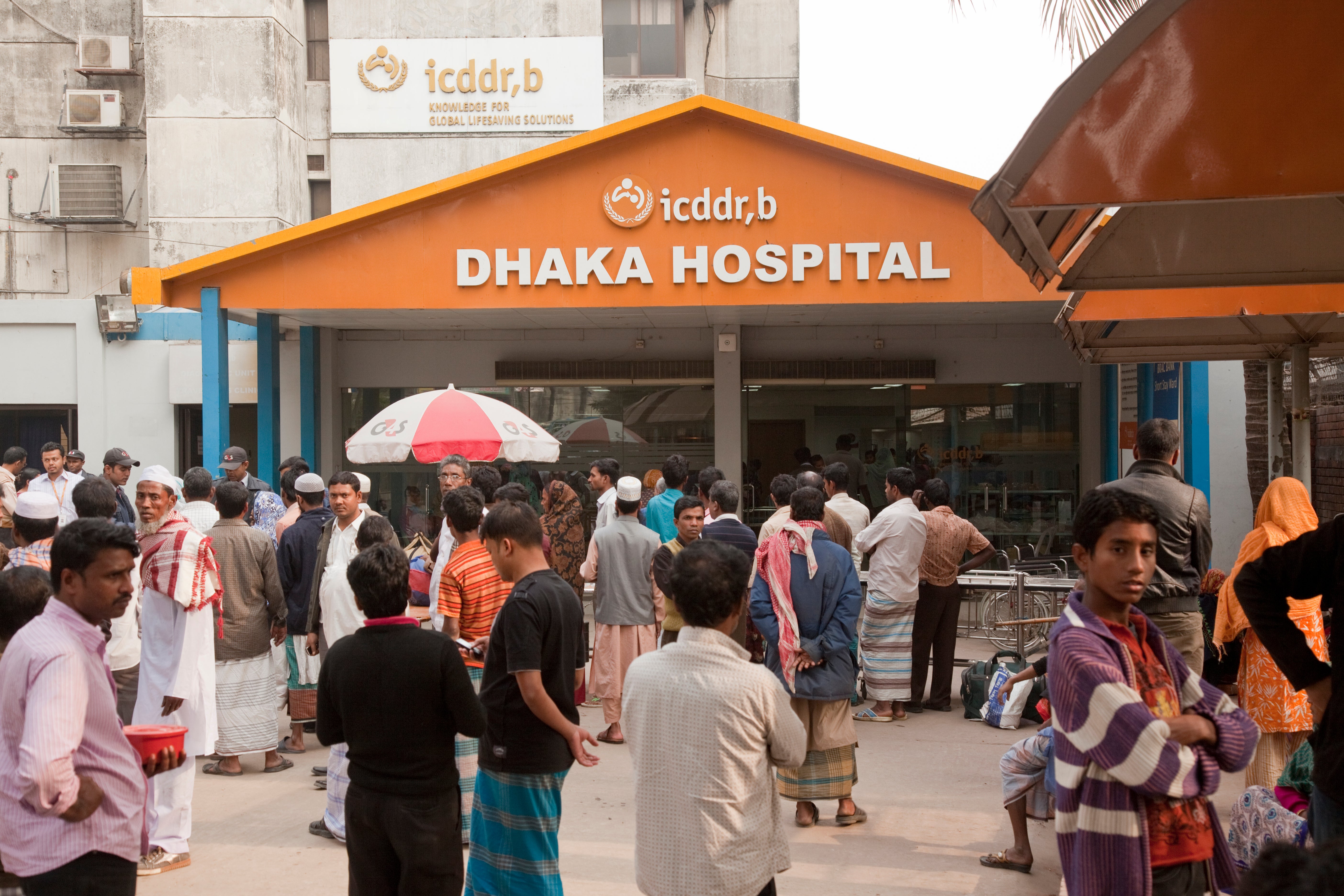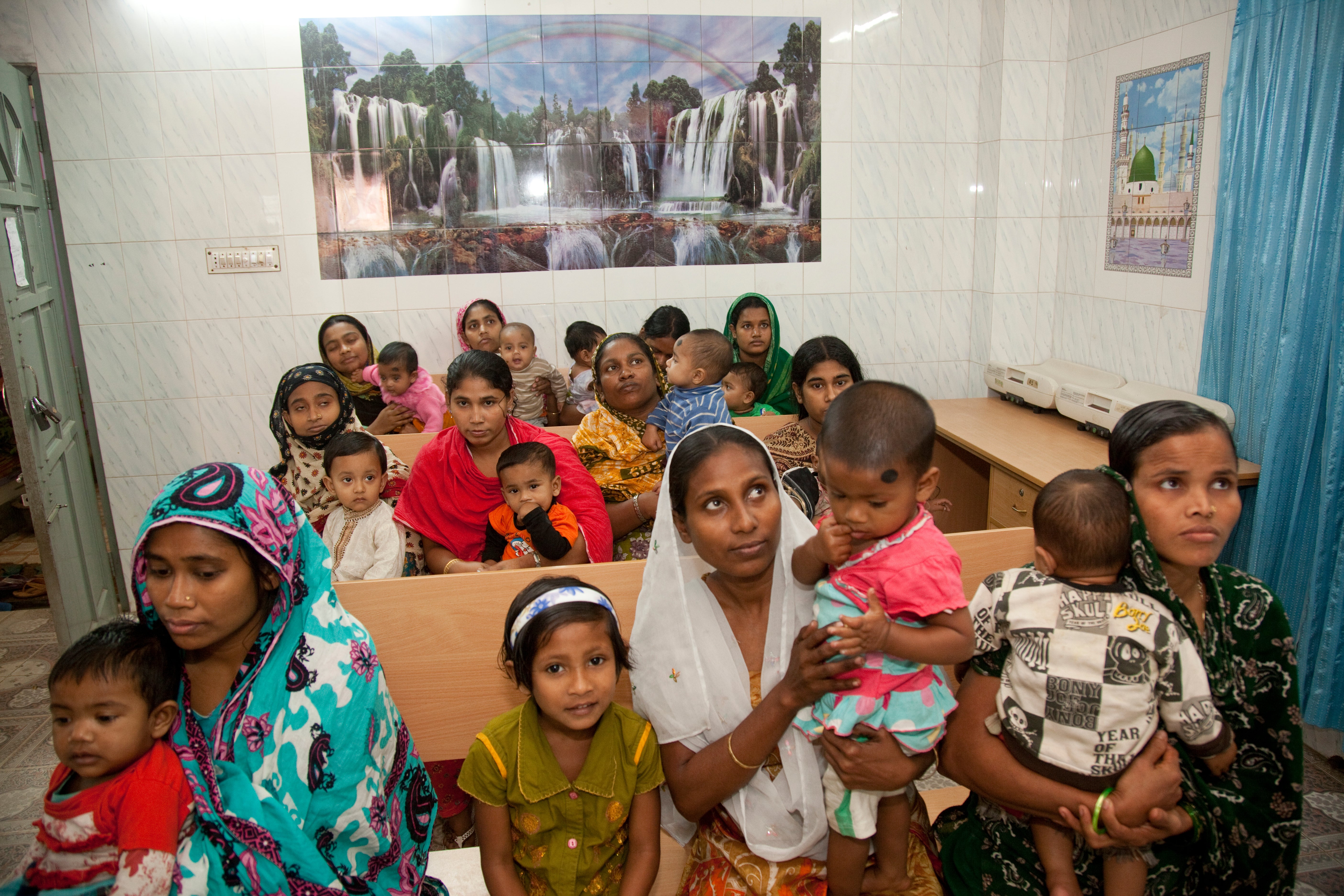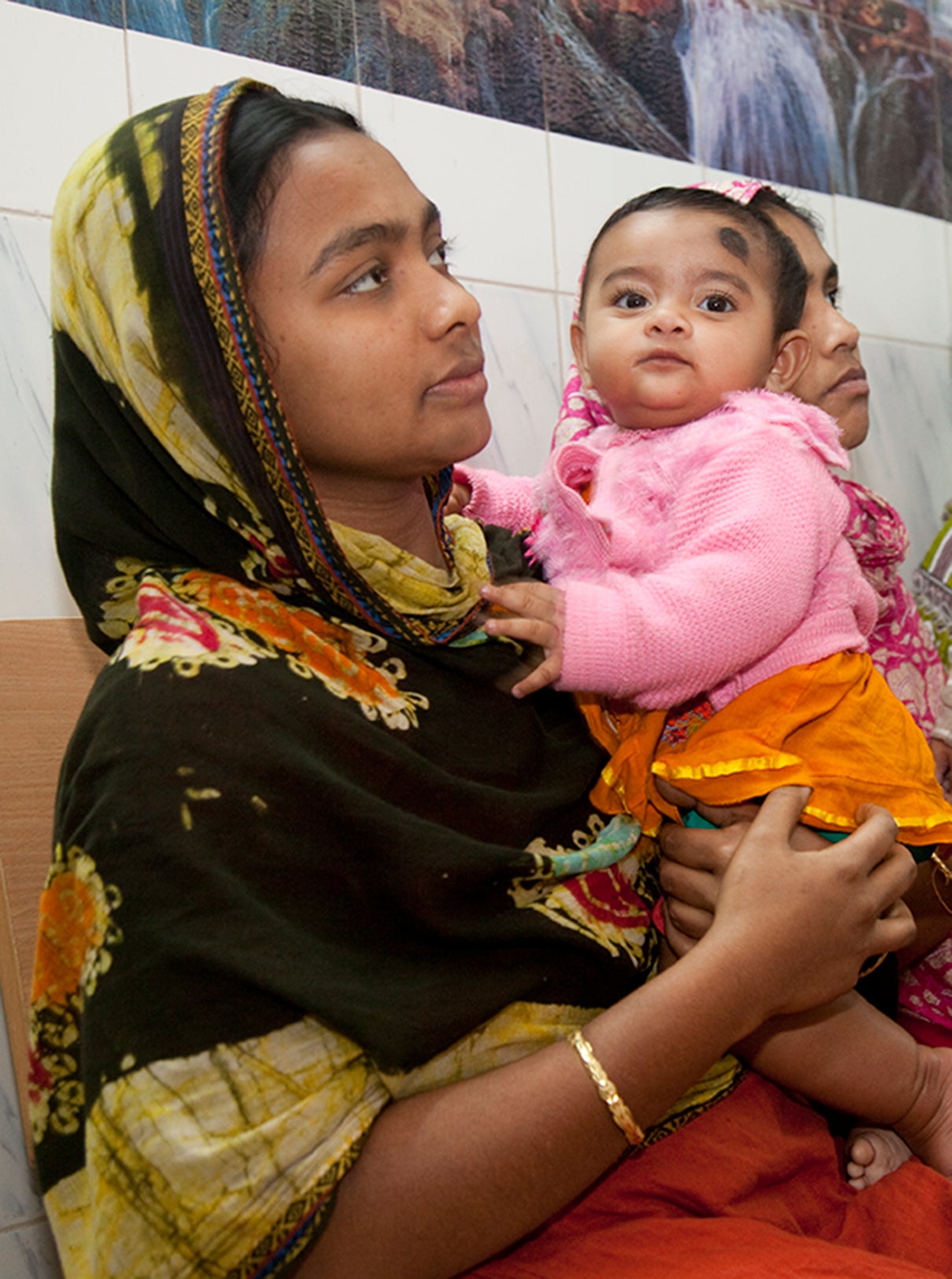Community Health Workers in Bangladesh
Remarkable collaboration increases demand and access to medical care for rural residents
CONTENTS
Quick Downloads

KEY INSIGHTS
For more than 40 years, both government and NGOs have worked - sometimes in collaboration and sometimes in parallel - to establish, expand, and improve robust pluralistic CHW programming. The programs are noteworthy for their large impact and scale; data-driven, innovative programming; focus on women’s health and empowerment; and integration into the larger health system.
The Bangladesh government and its NGO partners have developed complementary, supplementary, and overlapping community health worker programs that have helped the country reduce under-five mortality rate by 75 percent and maternal mortality ratio by 71 percent. They have helped increase the percentage of rural children who receive the critical DTP vaccine from near zero in the 1980s, to more than 90 percent. Today, about 130,000 CHWs, most of them women, deliver health education, preventive, promotive, and limited curative care across Bangladesh’s rural areas. About 50,000 of these CHWs work for the government, and the rest work for NGOs and the private sector.
Data-driven, problem-focused programming
Bangladesh has harnessed a wealth of data to design programming that both addresses the most pressing health challenges and adapts to changes.
From the very beginning, government and NGOs have used data to ensure their CHW programming has responded to clearly identified health challenges related to both supply of and demand for health care. Rigorous monitoring, including the use of CHWs themselves as frontline data gatherers, has grounded the program in field realities. The country’s emphasis on data-driven problem-solving has ensured each adaptation or expansion of programming is tailored to mirror clearly identified, measured, and prioritized challenges.

Commitment to experimentation, innovation, and adaptation
The first CHW program started shortly after Bangladesh’s independence, as the cash-strapped government’s innovative attempt to provide family planning information and services to rural women.

It proved a powerful model the country, and its partners, would adapt and adopt repeatedly over the next four-plus decades. Bangladesh’s community health efforts have gradually expanded over time, continuously innovating and adapting to reflect new research, changing domestic needs, and shifting international priorities. The Bangladesh-based international research organization, icddr,b, led much of this experimentation. The organization’s Matlab - the longest running demographic surveillance site in the Global South - continuously experimented, thoroughly tested innovations, and heavily informed and influenced government and NGO policies and programs.
Political commitment
Supporters of CHW programming proved expert in cultivating and sustaining -over nearly 50 years - the political commitment necessary to support robust programming.
Key to the success of Bangladesh’s community health efforts has been a consistent commitment from the government. The history of CHW programming in Bangladesh provides several insights into creating and sustaining this political commitment, including clearly defining the problem community health workers are well-positioned to address, leveraging windows of opportunity to launch large-scale efforts, and building diverse coalitions of champions that can execute, institutionalize, and sustain reform.

Leveraging NGO resources
Through contracts and deep partnerships built over decades, Bangladesh proved exceptionally adept at harnessing NGO expertise and resources to further its goal of improving access to health care.

A robust NGO sector developed its own channel of supplementary and complementary CHW programming, matching in scale the government’s CHW cohort. Bangladesh has consistently harnessed such NGO expertise, staffing, and other resources in three ways:
- The government has repeatedly and continually asked for NGOs’ assistance developing, testing, improving, and expanding its own programming
- The government has encouraged NGOs to develop NGO-led CHW programming that complements government programming
- The government has contracted to hire NGO CHWs
These diverse and intertwined CHW systems have increased knowledge of and demand for health care and made a spectrum of essential health services widely available.
Community engagement
Bangladesh understood that for its CHWs to make an impact, they would need robust community support gained through community management, oversight, and cost sharing.
Community engagement, a pillar of the government’s CHW programming, ensures programming is acceptable, appropriate, and responsive to the community’s needs. To achieve this, the government relies on community groups to guide and support CHW programming, strengthening local ownership and use of CHW services, and magnifying impact.


Community Health Workers in Bangladesh

Ask an Expert
Our team and partners are available to answer questions that clarify our research, insights, methodology, and conclusions.
